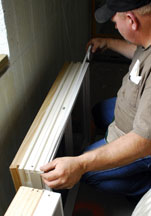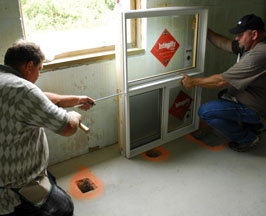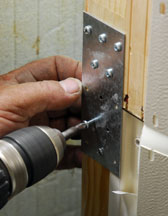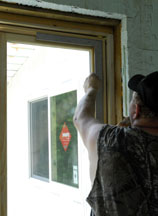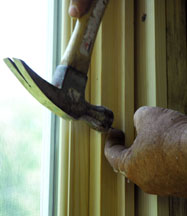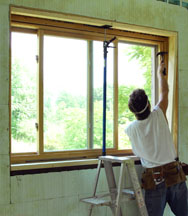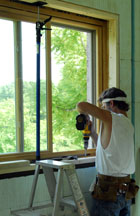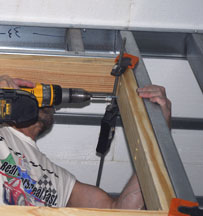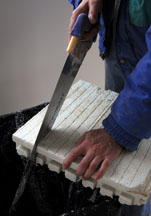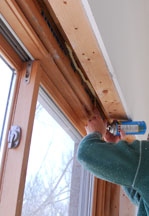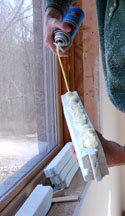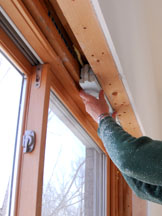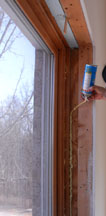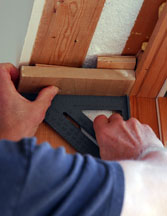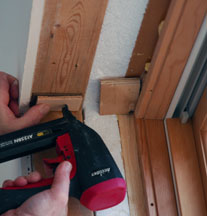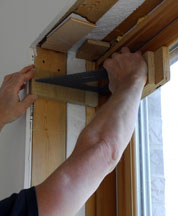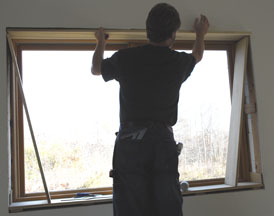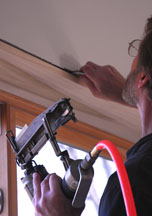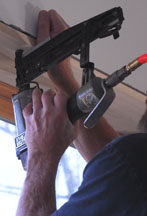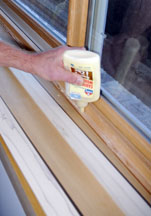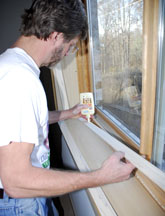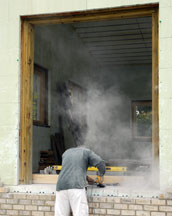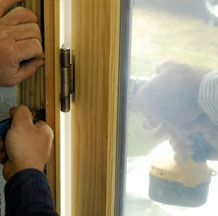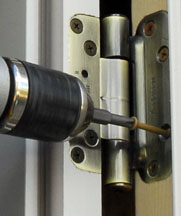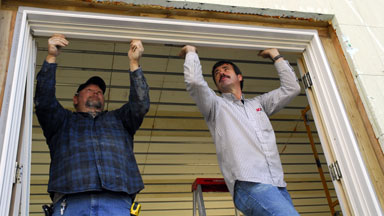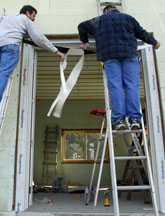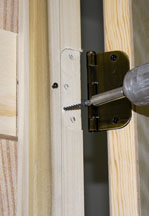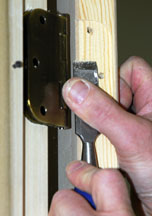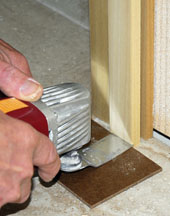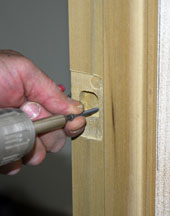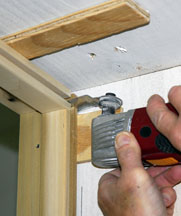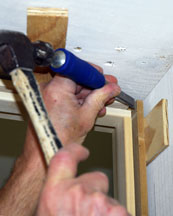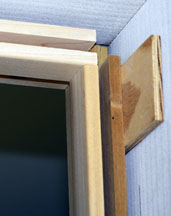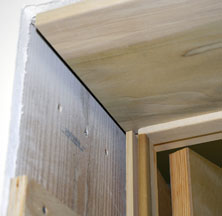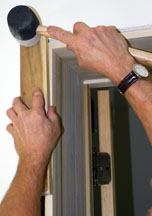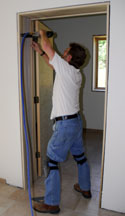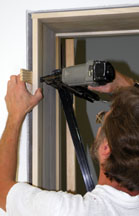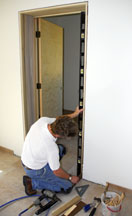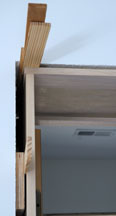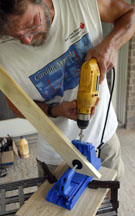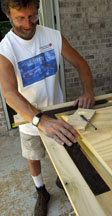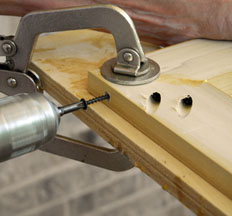| Because the window and door openings were too large and neither level nor square, they required a lot of preparation. It was especially important to make sure that the tops of the windows next to each other were at the same height so that the brick could be laid correctly. | ||
 |
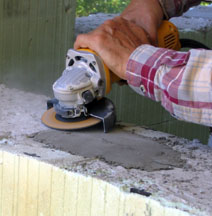 |
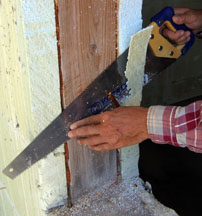 |
|
The screws that secured the wood during pouring were removed from the inside and outside edges of the foam blocks, then the sills were chipped, patched with grout, and ground where necessary. |
The foam was cut flush with the wood. | |
| The outer edges of the window openings were lined with 2" x 6" wood. Pressure treated wood was attached (with Tapcons screws) to the cement sill and white wood was screwed to it and to the sides and top. Additional wood was also added around the window and door openings that were too large, then the windows and doors were installed into these rough openings. | |||
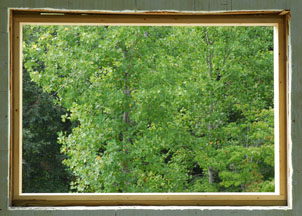 |
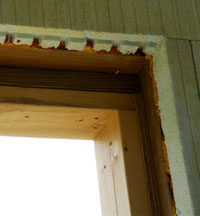 |
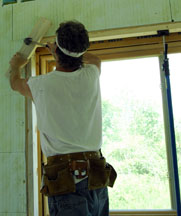 |
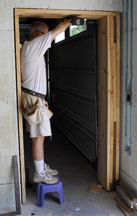 |
| The extra wood at the top, bottom and sides of the window and door openings was very expensive to install! We would have saved thousands of dollars had the rough openings in the ICF walls been framed to the specified sizes on the plan! | |||
| The windows were then installed into the rough opening. | ||
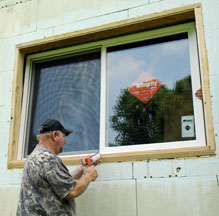 |
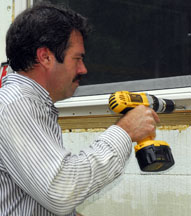 |
 |
| Steve Copeland applied a bead of silicon around the outside edge of the rough opening (just before the window was inserted from the inside of the house). | Mike Wright secured the lip around the edge of the window to the wood of the rough opening with screws. | Steve and David Morgan sealed the edges with peel-and-stick window wrap. |
